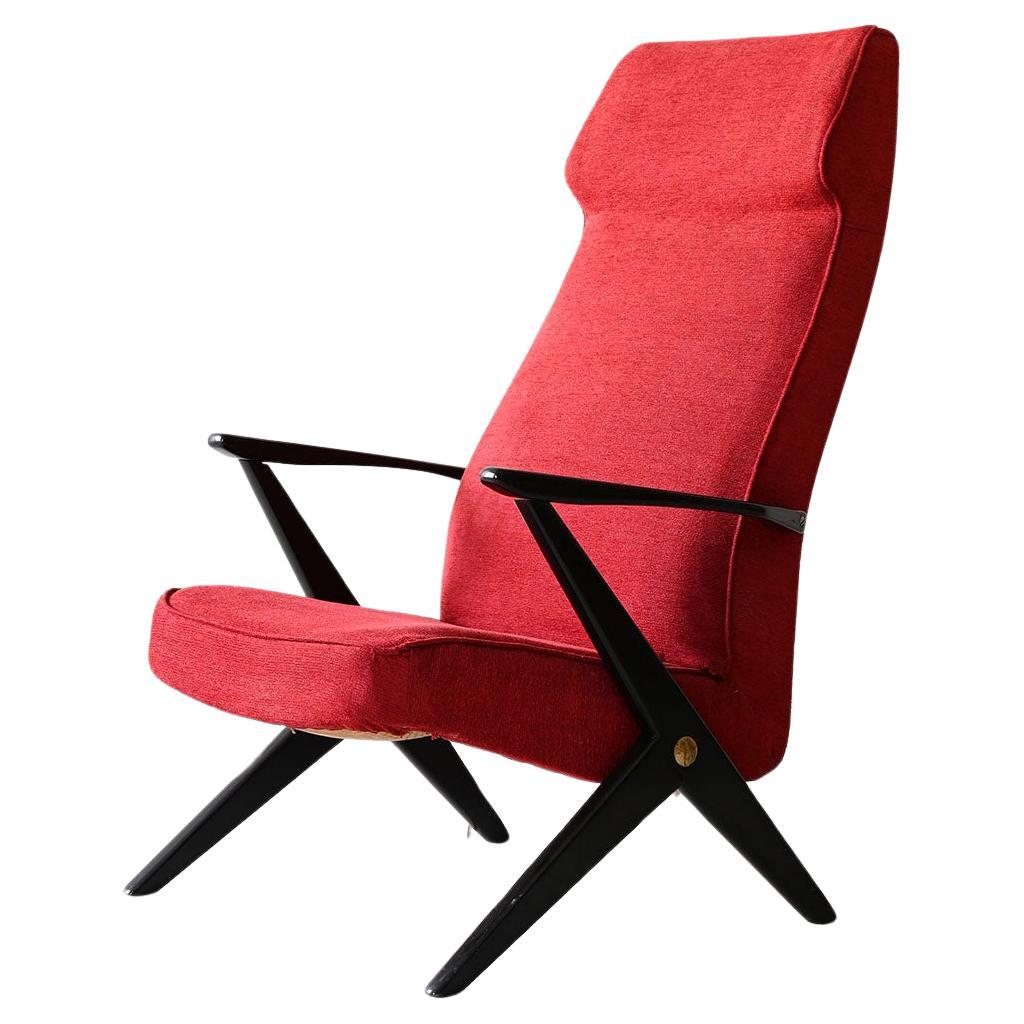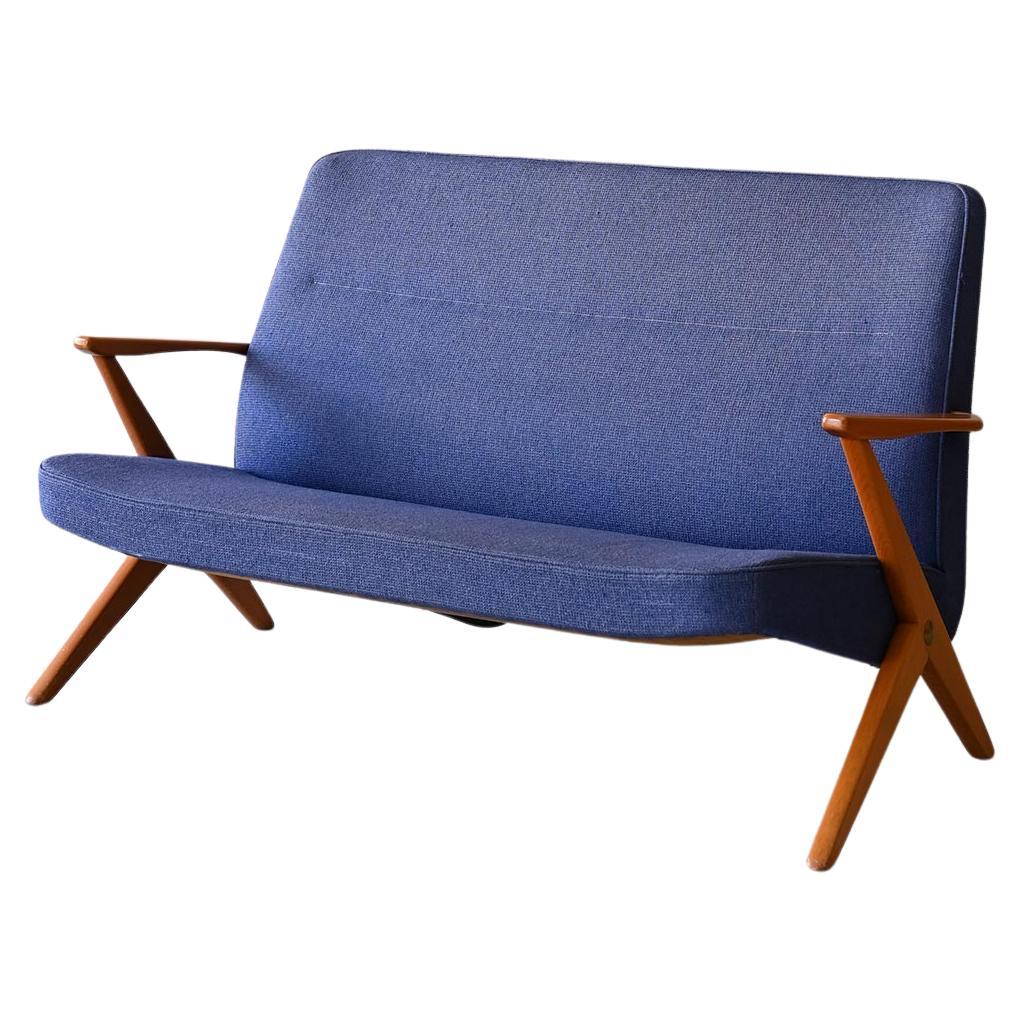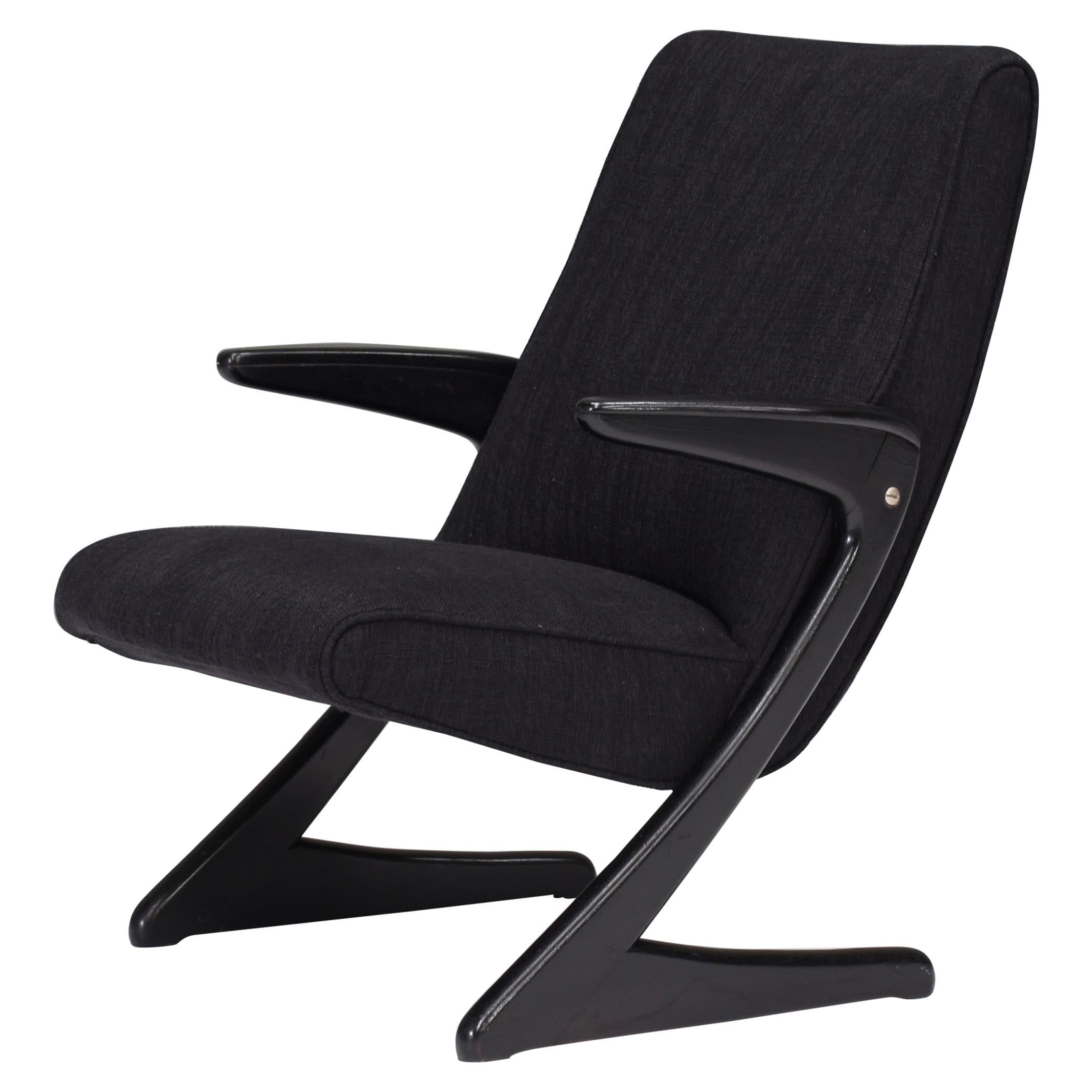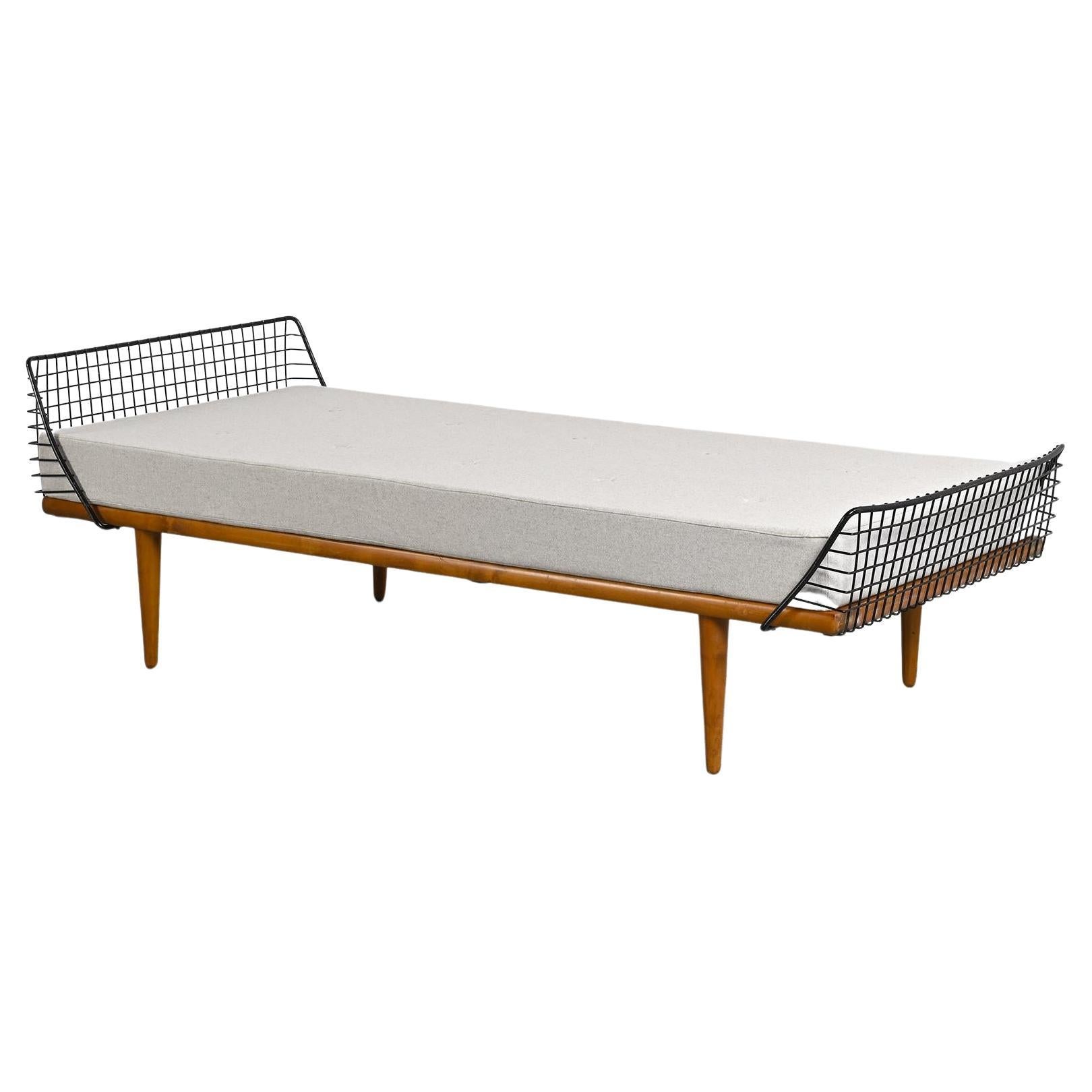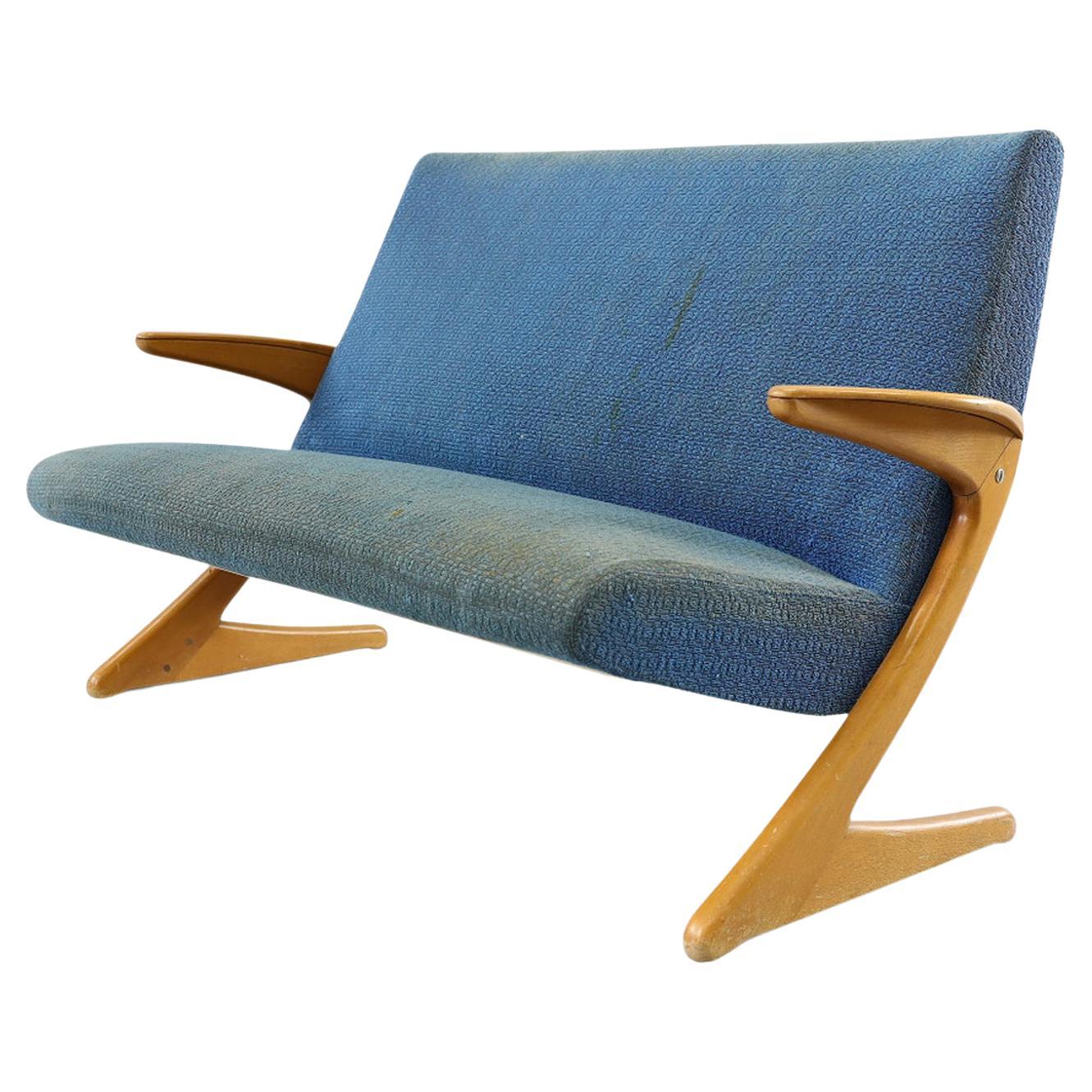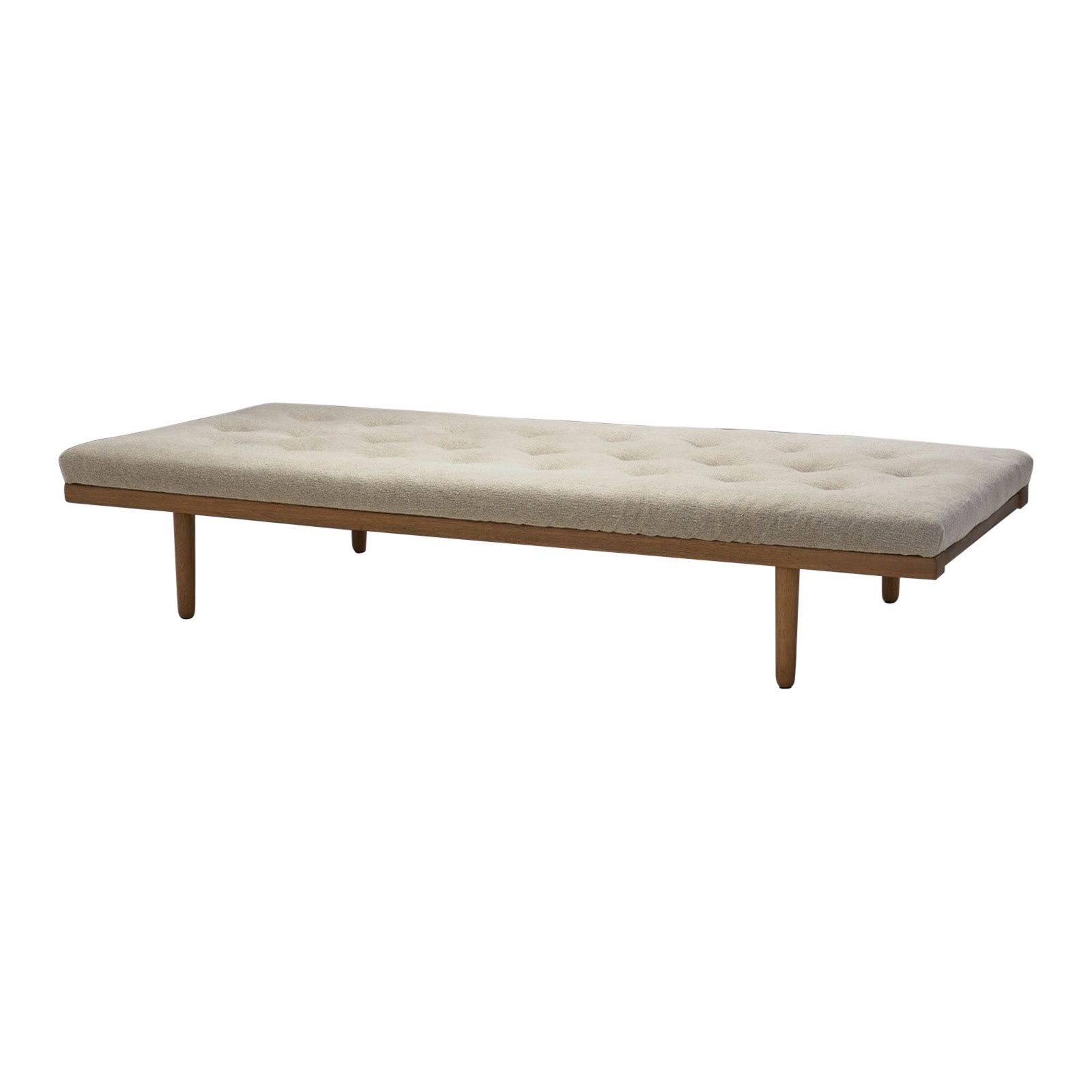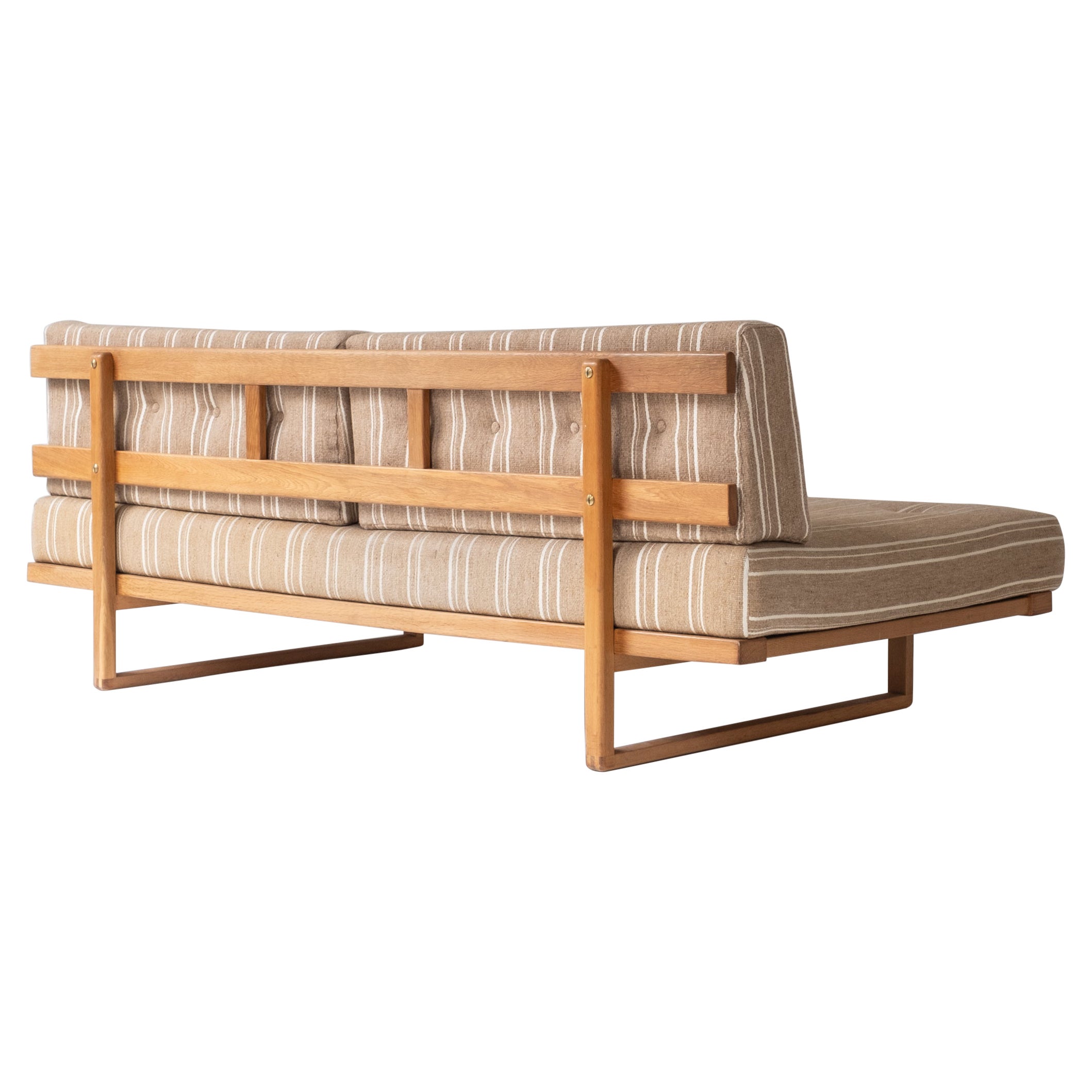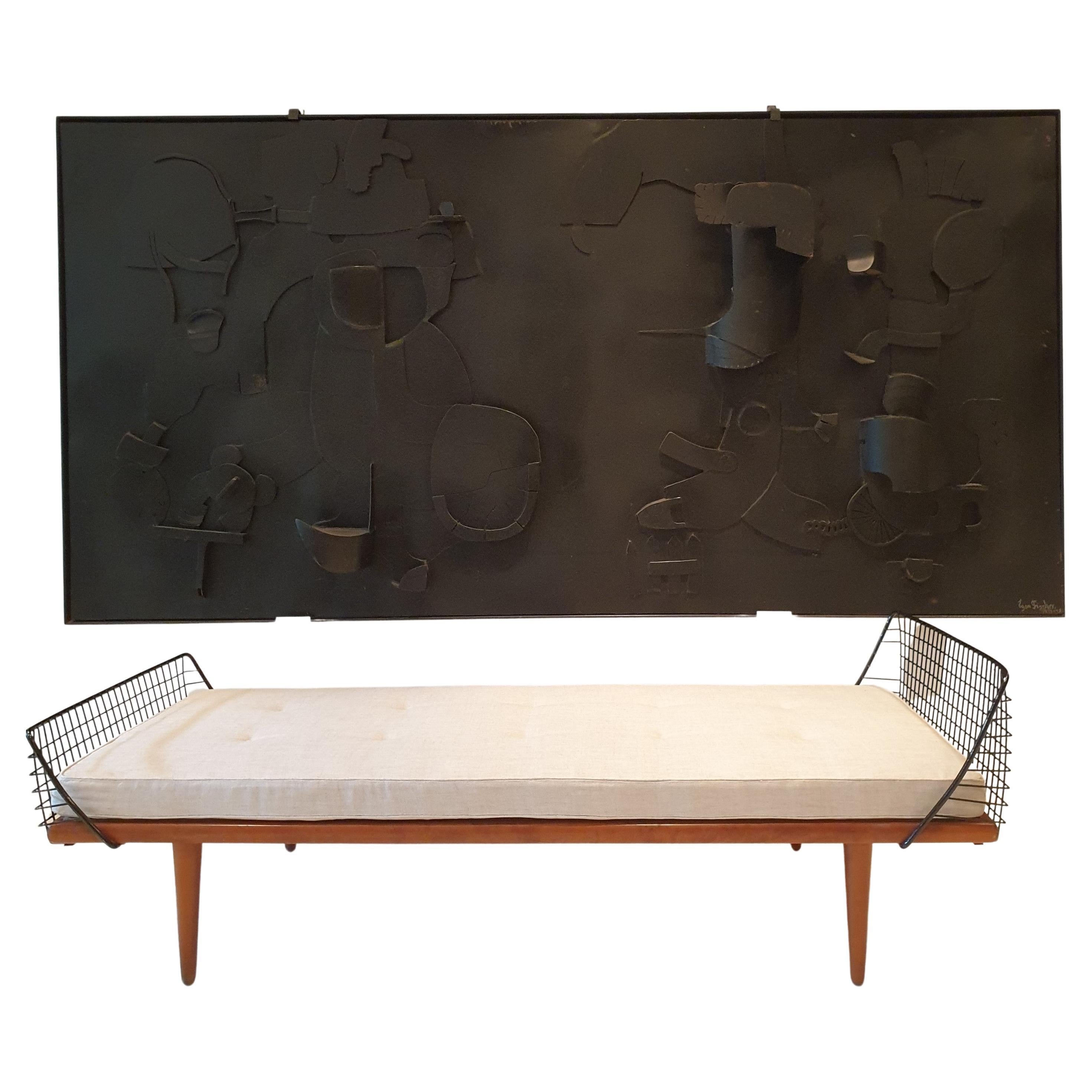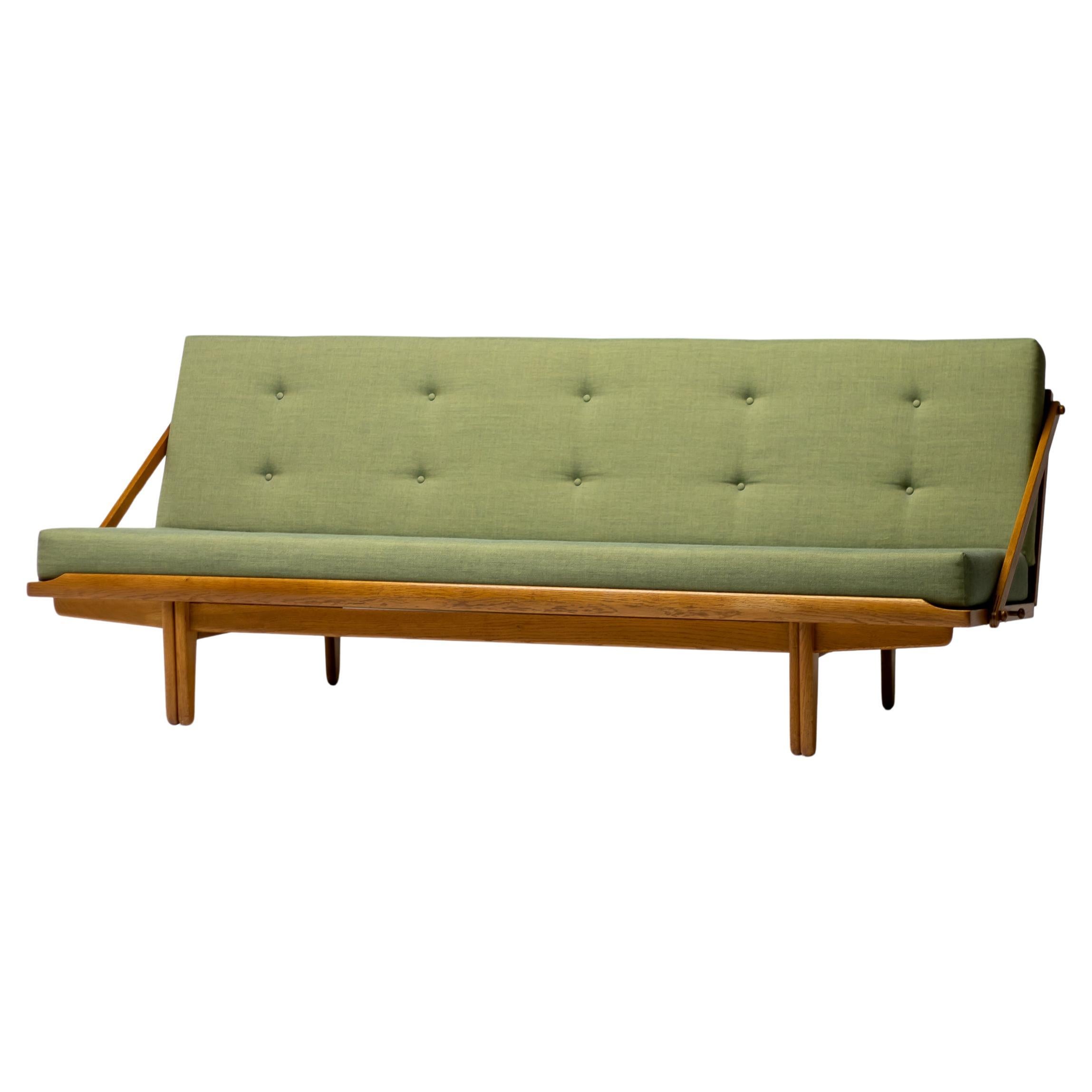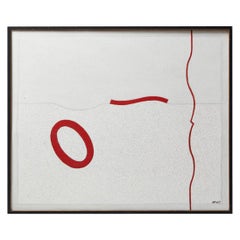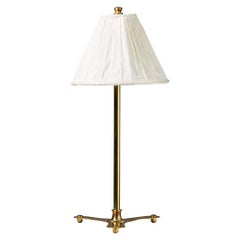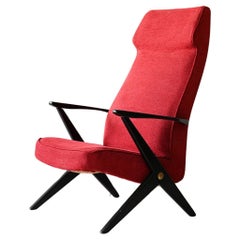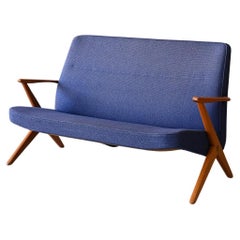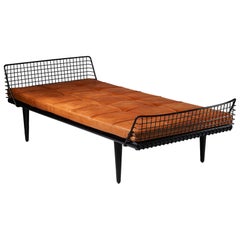
Daybed, Model “568-017” Designed by Bengt Ruda for NK, Sweden, 1950s
View Similar Items
Want more images or videos?
Request additional images or videos from the seller
1 of 15
Daybed, Model “568-017” Designed by Bengt Ruda for NK, Sweden, 1950s
About the Item
- Creator:Bengt Ruda (Designer)
- Dimensions:Height: 65 in (165.1 cm)Width: 106 in (269.24 cm)Depth: 93 in (236.22 cm)
- Style:Scandinavian Modern (Of the Period)
- Materials and Techniques:
- Place of Origin:
- Period:
- Date of Manufacture:1950s
- Condition:Wear consistent with age and use.
- Seller Location:Stockholm, SE
- Reference Number:1stDibs: LU1006618709042
About the Seller
5.0
Recognized Seller
These prestigious sellers are industry leaders and represent the highest echelon for item quality and design.
Gold Seller
These expertly vetted sellers are highly rated and consistently exceed customer expectations.
Established in 1998
1stDibs seller since 2013
184 sales on 1stDibs
Typical response time: 1 hour
More From This SellerView All
- Painting by Bengt Orup, Sweden, 1950sBy Bengt OrupLocated in Stockholm, SEOil on canvas. Signed. Provenance: Bo Mattssons collection, Malmö. W: 66,6 cm/ 2' 2 1/5" H: 56 cm/ 1' 10" D 2,7 cm cm/ 1"Category
Vintage 1950s Swedish Mid-Century Modern Paintings
MaterialsPaint
- Table lamp model 2552 designed by Josef Frank for Svenskt Tenn, Sweden. 1950sBy Josef FrankLocated in Stockholm, SEBrass. Table Lamp Model 2552 Designed by Josef Frank for Svenskt Tenn, Sweden, 1950s Measures: H 49.5 cm Josef Frank was a true European, he was also a pioneer of what would become classic 20th century Swedish design and the “Scandinavian Design Style”. Austrian- born Frank started his design career as an architect after having trained at the Technische Hochschule in Vienna between 1903 and 1910. After his training he went on to teach at Kunstgewerbeschule (The Viennese School of Arts and crafts) where he developed and espoused the new school of modernist thinking towards Architecture and Design that was coming to fruition in Vienna at the time. He also went on to lead the Vienna Werkbund throughout the 1920s. This was a truly progressive group of Architects and Designers who set about improving the daily lives of Austrian people through modernist design and architecture in partnership with Arts and Crafts ideals and construction. Frank’s leadership of the Werkbund had already cemented his place at the forefront of European design. Frank’s time in Vienna was typified by his design for the “Die Wohnung” exhibition of the Deutscher Werkbund in Stuttgart, 1927 where he exhibited along side his contemporaries at the forefront of design, such as the likes of Le Corbusier and Walter Gropius. Here he showed a specially designed pair of flat-roofed reinforced concrete houses in what is now seen as a typical modernist style. What separated Frank’s house from the other 32 houses of the exhibition was the interior and furniture inside the building. It was described as “Neo-Classical” and filled with an eclectic mix of period pieces, modern design and pieces designed by Frank himself that seemed to cross the two worlds. This was a complete opposite direction to that which his fellow Architects were travelling in with their pared back and angular aesthetics. Frank said of his own work: “The house is not a work of art, simply a place where one lives,” and by this reasoning Frank rejected the regimental mechanisation of the living space that his contemporaries believed in, instead he set about creating congenial and spontaneous interiors. Frank’s practice saw him placing the bright colours and the soft forms of nature back into the furnishings and interiors that he thought modernism sorely mist. Frank, along with Oskar Walch set up Haus und Garten in Vienna in 1925. This was Frank’s first commercial foray into furniture and home furnishings and the company went on to become the most influential furnishing house in Vienna with a riotous depth of colour and interesting shapes becoming the trademark of their design. However this success was to come to an end with rise of Nazism in Vienna in the early 1930’s. Frank was Jewish, and he and his wife Anna decided they would leave Vienna for her motherland: Sweden, in 1933. Frank continued to design for Haus and Garten, visiting Vienna occasionally and designing the pieces that would continue to be the company’s best...Category
Vintage 1950s Swedish Scandinavian Modern Table Lamps
MaterialsBrass
- Stool Model 927 Designed by Josef Frank for Svenskt Tenn, Sweden, 1950sBy Josef FrankLocated in Stockholm, SEStool model 927 designed by Josef Frank for Svenskt Tenn, Sweden, 1950s. Mahogany and rattan. Measures: H: 43 cm W: 43 cm D: 28 cm Josef Frank was a true European, he was also a pioneer of what would become classic 20th century Swedish design and the “Scandinavian Design Style”. Austrian- born Frank started his design career as an architect after having trained at the Technische Hochschule in Vienna between 1903 and 1910. After his training he went on to teach at Kunstgewerbeschule (The Viennese School of Arts and crafts) where he developed and espoused the new school of modernist thinking towards Architecture and Design that was coming to fruition in Vienna at the time. He also went on to lead the Vienna Werkbund throughout the 1920s. This was a truly progressive group of Architects and Designers who set about improving the daily lives of Austrian people through modernist design and architecture in partnership with Arts and Crafts ideals and construction. Frank’s leadership of the Werkbund had already cemented his place at the forefront of European design. Frank’s time in Vienna was typified by his design for the “Die Wohnung” exhibition of the Deutscher Werkbund in Stuttgart, 1927 where he exhibited along side his contemporaries at the forefront of design, such as the likes of Le Corbusier and Walter Gropius. Here he showed a specially designed pair of flat-roofed reinforced concrete houses in what is now seen as a typical modernist style. What separated Frank’s house from the other 32 houses of the exhibition was the interior and furniture inside the building. It was described as “Neo-Classical” and filled with an eclectic mix of period pieces, modern design and pieces designed by Frank himself that seemed to cross the two worlds. This was a complete opposite direction to that which his fellow Architects were travelling in with their pared back and angular aesthetics. Frank said of his own work: “The house is not a work of art, simply a place where one lives,” and by this reasoning Frank rejected the regimental mechanisation of the living space that his contemporaries believed in, instead he set about creating congenial and spontaneous interiors. Frank’s practice saw him placing the bright colours and the soft forms of nature back into the furnishings and interiors that he thought modernism sorely mist. Frank, along with Oskar Walch set up Haus und Garten in Vienna in 1925. This was Frank’s first commercial foray into furniture and home furnishings and the company went on to become the most influential furnishing house in Vienna with a riotous depth of colour and interesting shapes becoming the trademark of their design. However this success was to come to an end with rise of Nazism in Vienna in the early 1930’s. Frank was Jewish, and he and his wife Anna decided they would leave Vienna for her motherland: Sweden, in 1933. Frank continued to design for Haus and Garten, visiting Vienna occasionally and designing the pieces that would continue to be the company’s best sellers long after Frank was forced to hand the company over in 1938 after the Third Reich annexation of Austria. When Josef and Anna had moved to Sweden Frank had struck up a working relationship with Design shop owner Estrid Ericson. Ericson was the proprietor of Svenskt Tenn that at this point was a successful interiors shop in Stockholm with the royal warrant of appointment to the Swedish Royal Household. In 1935 Frank had become the chief designer for Svenskt Tenn and had set about putting all of his creative effort into his designs for the company. At the World Expositions in Paris in 1937 and New York in 1939 the world saw for the first time the wealth of products that Frank had been working on, ranging from candlesticks to cabinets, there was not a domestic object that Frank had not subjected to his colourful, comfortable and organic style of Modernism. Frank’s new school of Modernism championed ideas such as chairs having a freeing, open back and that “If one desires the room to be comfortable…all pieces of furniture should allow for a free view of the separating line between the floor and the wall. A cabinet without legs breaks this line and thus reduces the feeling of space.” A world-wide audience tired of classic Modernism’s furniture with solid planes and aggressive forms leapt upon these ideas and Franks natural and bright designs for Svenskt Tenn became internationally desired. Frank created over 2000 designs for Svenskt Tenn and his products continue to be the core of their brand. Frank’s rejections of tubular metal and heavy lacquers within his furniture have insured his unique light form of Modernism continues to influence and flourish today. His natural toned mahogany and walnut pieces along with his tactile leather covered and brightly shaded lighting still bring the forms of nature back into the home. Original Frank pieces are now increasingly rare, highly desirable and are the epitome of “Scandinavian Design”. Renowned Designer and Academic Isle Crawford...Category
Vintage 1950s Swedish Mid-Century Modern Chairs
MaterialsRattan, Mahogany
- Sideboard Model 1148 Designed by Josef Frank for Svenskt Tenn, Sweden, 1950sBy Josef FrankLocated in Stockholm, SESideboard model 1148 designed by Josef Frank for Svenskt Tenn, Sweden, 1950s. Walnut and alder root veneer. This sideboard model 1148 with two clever extension flaps was designed b...Category
Mid-20th Century Swedish Mid-Century Modern Sideboards
MaterialsWalnut
- Vase Designed by Stig Lindberg for Gustavsberg, Sweden, 1950sBy Stig LindbergLocated in Stockholm, SEVase designed by Stig Lindberg for Gustavsberg, Sweden. 1950s. Stoneware. Dimensions: Height: 16 cm/ 6 1/3" Diameter: 13/ 5 1/8" Stig Lindberg was one of the most influential Swe...Category
Vintage 1950s Swedish Scandinavian Modern Ceramics
MaterialsCeramic, Stoneware
- Bedside Table Model 914 Designed by Josef Frank for Svenskt Tenn, Sweden, 1950sBy Josef FrankLocated in Stockholm, SEBedside table model 914 designed by Josef Frank for Svenskt Tenn, Sweden, 1950s. Mahogany veneer and brass handle. Josef Frank’s elegant bedside table model 914 with sophisticated brass handles is one of Svenskt Tenn’s timeless classics. It works very well combined with modern or antique pieces. The overall simplicity of form and use of luxurious wood are characteristic of Josef Frank. L: 65 cm W: 40 cm H: 55 cm Josef Frank was a true European, he was also a pioneer of what would become classic 20th century Swedish design and the “Scandinavian Design Style”. Austrian- born Frank started his design career as an architect after having trained at the Technische Hochschule in Vienna between 1903 and 1910. After his training he went on to teach at Kunstgewerbeschule (The Viennese School of Arts and crafts) where he developed and espoused the new school of modernist thinking towards Architecture and Design that was coming to fruition in Vienna at the time. He also went on to lead the Vienna Werkbund throughout the 1920s. This was a truly progressive group of Architects and Designers who set about improving the daily lives of Austrian people through modernist design and architecture in partnership with Arts and Crafts ideals and construction. Frank’s leadership of the Werkbund had already cemented his place at the forefront of European design. Frank’s time in Vienna was typified by his design for the “Die Wohnung” exhibition of the Deutscher Werkbund in Stuttgart, 1927 where he exhibited along side his contemporaries at the forefront of design, such as the likes of Le Corbusier and Walter Gropius. Here he showed a specially designed pair of flat-roofed reinforced concrete houses in what is now seen as a typical modernist style. What separated Frank’s house from the other 32 houses of the exhibition was the interior and furniture inside the building. It was described as “Neo-Classical” and filled with an eclectic mix of period pieces, modern design and pieces designed by Frank himself that seemed to cross the two worlds. This was a complete opposite direction to that which his fellow Architects were travelling in with their pared back and angular aesthetics. Frank said of his own work: “The house is not a work of art, simply a place where one lives,” and by this reasoning Frank rejected the regimental mechanisation of the living space that his contemporaries believed in, instead he set about creating congenial and spontaneous interiors. Frank’s practice saw him placing the bright colours and the soft forms of nature back into the furnishings and interiors that he thought modernism sorely mist. Frank, along with Oskar Walch set up Haus und Garten in Vienna in 1925. This was Frank’s first commercial foray into furniture and home furnishings and the company went on to become the most influential furnishing house in Vienna with a riotous depth of colour and interesting shapes becoming the trademark of their design. However this success was to come to an end with rise of Nazism in Vienna in the early 1930’s. Frank was Jewish, and he and his wife Anna decided they would leave Vienna for her motherland: Sweden, in 1933. Frank continued to design for Haus and Garten, visiting Vienna occasionally and designing the pieces that would continue to be the company’s best...Category
Vintage 1950s Swedish Mid-Century Modern Side Tables
MaterialsBrass
You May Also Like
- Armchair by Bengt Ruda for NKBy Bengt RudaLocated in Brescia, ITOriginal 1950s red Nordic armchair. This characterful armchair is wrapped in a vibrant shade of red. The black-colored wooden frame emphasizes the contrast and gives the armchair a ...Category
Vintage 1950s Swedish Scandinavian Modern Armchairs
MaterialsFabric, Wood
- Sofa by Bengt Ruda for NKBy Bengt RudaLocated in Brescia, ITNordic sofa in original vintage blue fabric. Designed by Bengt Ruda for NK in the 1950s, it was manufactured in Sweden. X-shaped legs offer stability and modernity, while rounded wo...Category
Vintage 1950s Swedish Scandinavian Modern Sofas
MaterialsFabric, Wood
- Chair with armrests by Bengt Ruda for NKBy NK (Nordiska Kompaniet), Bengt RudaLocated in Brescia, ITChair with arms designed by Bengt Ruda for Nordiska Kompaniet in the 1950s. The seat has been lined and reupholstered with dirt-resistant 'aquaclean' fabric. Good condition. It may...Category
Vintage 1950s Swedish Scandinavian Modern Chairs
MaterialsFabric, Wood
- Pair of 1950s Easy Chairs by Bengt Ruda for Nordiska Kompagniet, SwedenBy NK (Nordiska Kompaniet), Bengt RudaLocated in Bridgeport, CTA rare and very cool pair of Bengt Ruda midcentury beech easy chairs designed around mid 1950 and produced around the same time by Nordiska Kompaniet (NK), Sweden’s premiere departme...Category
Vintage 1950s Swedish Scandinavian Modern Lounge Chairs
MaterialsWool, Beech
- Z Lounge Armchair by Bengt Ruda for Nordiska, Sweden, circa 1950By Bengt Ruda, Nordiska KompanietLocated in Pijnacker, Zuid-HollandZ shaped lounge chair by Bengt Ruda for Nordiska Kompaniet, Stockholm, Sweden – circa 1950. The chair is very comfortable and has new upholstery...Category
Vintage 1950s Swedish Scandinavian Modern Armchairs
MaterialsFabric, Wood
$1,742 Sale Price20% Off - Teak Swedish Daybed by Triva Sweden, circa 1960By Bengt RudaLocated in VILLEURBANNE, FRModernist daybed envisioned by Swedish designer Bengt Ruda in the 1960s, epitomizing the distinctive design of its era. Crafted with a teak frame supported by four gracefully tapere...Category
Mid-20th Century Swedish Scandinavian Modern Daybeds
MaterialsMetal
Recently Viewed
View AllMore Ways To Browse
1950s Metal Daybeds
Mid-20th Century Steel Daybeds
Scandinavian Metal Daybeds
Scandinavian Animal Skin Daybeds
Scandinavian Modern Animal Skin Daybeds
Ruda Sweden
Scandinavian Steel Daybeds
Ruda Bengt
Swedish Animal Skin Daybeds
Illums Bolighus Kobenhavn
Seated Furniture Midcentury Modern Daybeds
Retro Upholstered Bed
Wood Day Beds
Vintage Mid Century Daybed
Mid Century Upholstered Beds
Mid Century Bed Upholstered
Midcentury Upholstered Bed
Antique Wood Daybed
